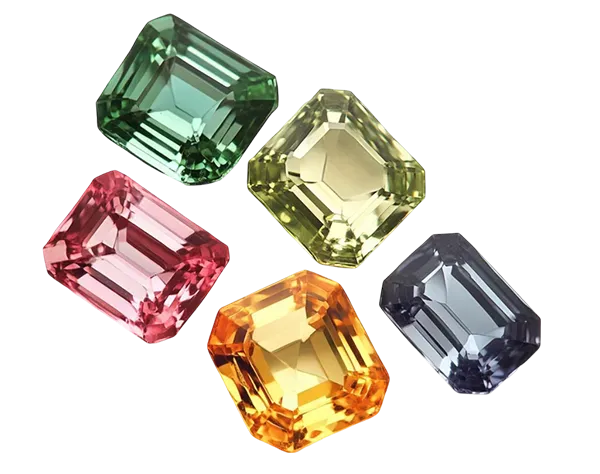Hardness is an important factor in determining a gemstone’s durability and resistance to scratches, pressure, and abrasion. When two minerals of different hardness levels come into contact, the softer one will show visible scratches. The Mohs hardness pencil is a practical tool for testing hardness by comparing a gemstone's resistance to known reference minerals.
Mohs hardness pencils are used to assess a gemstone's hardness by gently scratching its surface. If a visible mark appears, the gemstone’s hardness is lower than that of the testing pencil, making it a useful tool for quick hardness evaluation in gemology and mineralogy.
| Model | | | | |
| Quantity (pcs) | Total: 5 pcs No. 5: 1 pc No. 6: 1 pc No. 7: 1 pc No. 8: 1 pc No. 9: 1 pc | Total: 6 pcs No. 4: 1 pc No. 5: 1 pc No. 6: 1 pc No. 7: 1 pc No. 8: 1 pc No. 9: 1 pc | Total: 8 pcs No. 3: 1 pc No. 4: 1 pc No. 5: 1 pc No. 6: 1 pc No. 7: 1 pc No. 8: 1 pc No. 9: 1 pc No. 10: 1 pc | Total: 10 pcs No. 1: 1 pc No. 2: 1 pc No. 3: 1 pc No. 4: 1 pc No. 5: 1 pc No. 6: 1 pc No. 7: 1 pc No. 8: 1 pc No. 9: 1 pc No. 10: 1 pc |
| Weight | 170g | 180g | 190g | 205g |
| Single piece size | 104 × 6mm | |||
| Single piece weight | Approx. 7g | |||
| Packaging size | 170 × 120 × 35mm | |||
| The Mohs scale is divided into ten levels, each corresponding to a specific reference mineral: talc (1), gypsum (2), calcite (3), fluorite (4), apatite (5), orthoclase feldspar (6), quartz (7), topaz (8), corundum (9), and diamond (10). | ||||
Before using the hardness pencils, observe the sample and make an initial visual estimate of its hardness to determine a starting point for testing.
Begin by using a hardness pencil rated 1–2 levels lower than the estimated hardness. If the pencil does not leave a scratch, the sample is harder than that level. Gradually move up to a higher-rated pencil, repeating the process until a faint mark appears, this indicates the sample's hardness is close to that level. If a clear scratch is made, the hardness is lower than the pencil rating. Apply moderate pressure during testing; excessive force or too little force can lead to inaccurate results.
Hardness testing through scratching is not recommended for set gemstones, as it may damage the jewelry or affect its appearance.
The hardness pencils provide a relative hardness assessment and should be used alongside other gemological tools such as polariscopes, microscopes, refractometers, and UV fluorescence lamps to verify results.
Our team is ready to assist you with gemological instruments and solutions for precise gemstone analysis.
